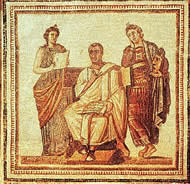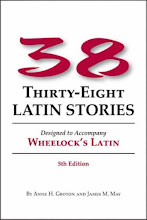Roman architecture was varied, and different attributes of architecture were unique to certain areas. Monuments and buildings were made for the need of the patron and did not reflect the temperament of the architect, so few names are known of Roman architects. In the beginning, cities were not planned, but in the later Roman Republic the idea of city planning was adopted and cities became uniform. Cities were rectangular and had two main streets. In the center of the city was normally the forum, the Senate house, records office, and the basilica.
Quarried stone, timber beams, terra-cotta tiles, and plaques were the esential building materials of the time. The stone used varied from travertine to marble. The invention of concrete revolutionized the history of architecture and made it possible to construct a wider variety of buildings than the older method(post-and-lintel system) allowed. One of the most famous concrete made temple is the Pantheon. Bricks then became a favorite for building large constructs. Architects were encouraged to use irregular styles to lend visual excitement to the buildings. Public buildings were often the grandest and costliest strcutures in the city, becuase of their architecture.








No comments:
Post a Comment